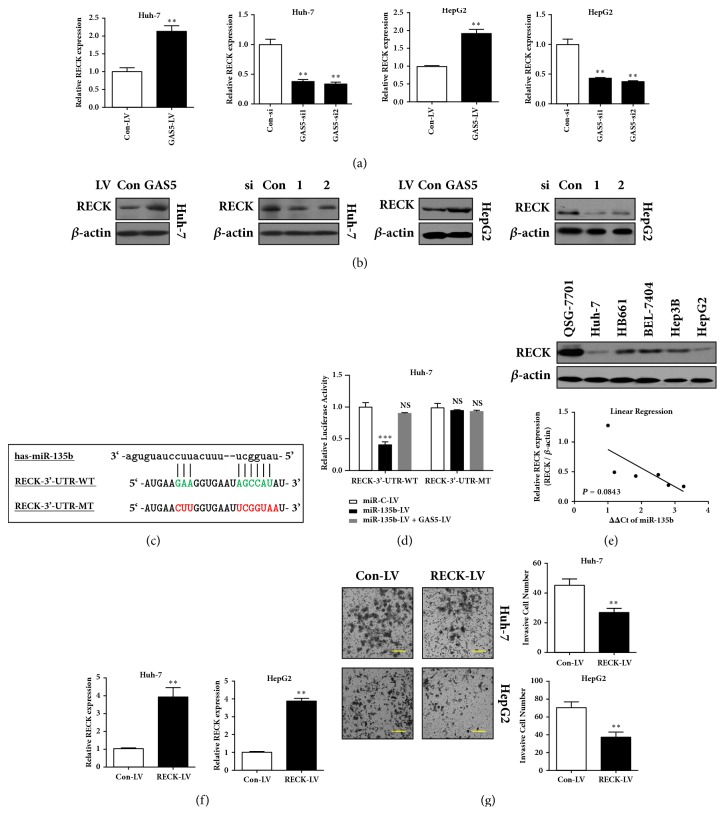Figure 4.
GAS5 regulates RECK expression via sponging miR-135b. (a) Huh-7 and HepG2 cells were infected by lentivirus (LV) expressing GAS5. Huh-7 and HepG2 cells were transfected with GAS5 siRNAs. 72h later, the expression of RECK was detected by qRT-PCR. (b) Huh-7 and HepG2 cells were infected by lentivirus (LV) expressing GAS5. Huh-7 and HepG2 cells were transfected with GAS5 siRNAs. 72h later, the expression of RECK was detected by western blot. (c) Putative miR-135b binding sites in the RECK 3'-UTR (3'-untranslated regio) predicted by TargetScan Release 3.1 online software. Wild-type (WT) binding sequences were highlighted in green. Mutant (MT) binding sequences were highlighted in red. (d) Huh-7 cells were cotransfected with wild-type or mutant RECK 3'-UTR reporters with miR-135b/GAS5 overexpressing or control lentivirus. 72h later, cells were harvested and firefly luciferase activity was normalized to Renilla luciferase activity. (e) The expression of RECK was lower in HCC cell lines compared with QSG-7701 normal hepatocytes assessed by western blot. β-actin was used as an internal control. The bottom panels showed the correlation between miR-135b and RECK expression in HCC cell lines. U6B or β-actin was served as an internal control, respectively. Statistical analysis was performed by Pearson's correlation analysis. (f) Huh-7 and HepG2 cells were infected by lentivirus (LV) expressing RECK. 72h later, the expression of RECK was detected by qRT-PCR. (g) Cell invasion assay was performed to investigate the invasion ability of RECK overexpression using stable cells as described in (f). Data represent the mean±SD from three independent experiments. ∗∗: P<0.01, ∗∗∗: P<0.001, and NS: no significance. Scale bar: 50μm.

